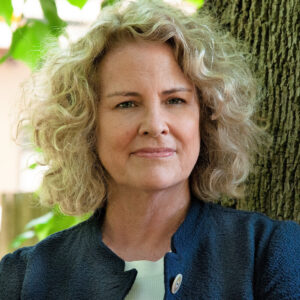Instead of repeating inaccurate depictions of Harriet Tubman’s achievements, let’s reclaim her story and demand deeply researched and respectful interpretation to reveal the true story of this remarkable woman.

Launching Tuesday, Feb. 1, and culminating on March 10, the Harriet Tubman Bicentennial Project pays tribute to this feminist icon with a special commemorative issue through Ms. online and in print. Explore the interactive groundbreaking site here.
How do we know anything about Harriet Tubman? After all, she was but one of millions enslaved before the Civil War and among the tens of thousands who successfully escaped to freedom. She could not read and write and left nothing in her own hand. It is remarkable, then, that we know her at all.
But we do because, as a self-liberated woman with a fierce mission to free others, she attracted influential and powerful people. Liberty or death, she told them (Bradford 1869, 22). Her insatiable drive to rob enslavers of their “property,” and willingness to die trying, motivated the most influential Black and white abolitionists and civil rights progressives to seek her out. Her powerful presence and intellect kept them in her orbit. They listened to her, and she inspired them. She demanded that they do more, give more, be better allies, and they did. They wrote about her—to each other and for the press—preserving her story for generations.
They did not always preserve the facts, though. Since the first biographical details about Tubman were published in Boston’s Commonwealth newspaper in July 1863, her life story has been rewritten, distorted and reimagined time and time again. When Tubman was alive, she relied on amanuenses to record and interpret her words. While some of them recorded her faithfully, particularly in their private correspondence, others were baldly reckless and careless with the information she gave them—they did not respect her because they saw her as illiterate. They did not worry about the truthfulness of what they reported, and in some cases deliberately obscured her truths.
Since the first biographical details about Tubman were published in Boston’s Commonwealth newspaper in July 1863, her life story has been rewritten, distorted and reimagined time and time again.
They could not imagine that Tubman had great literacy. Her education, borne out of self-preservation necessitated by extreme oppression, consisted of learning to read the night sky, the rivers, streams and marshes, woods, and fields. She could read people and discern character. Those tools, those literacies, shaped her intellect, nurturing a genius that fomented incredible change. If those documentarians had recognized those gifts, they would not have fashioned false narratives as substitutes for her actions. As a result, her story, her accomplishments have become fortified by myths, half-truths and misinformation for generations.
Abolitionist Franklin Sanborn was the first, and perhaps most devoted recorder of Tubman’s life, when he wrote and published the Commonwealth newspaper article. A journalist and editor, Sanborn had known Tubman for several years and knew her well. Many of the myths and unsubstantiated stories circulated about Tubman begin with Victorian author Sarah Bradford. She became Tubman’s biographer in 1868 when she agreed to write and publish Scenes in the Life of Harriet Tubman. Bradford was in a hurry to write the biography, she wrote in the preface to the slim volume, because she was sailing for Europe that fall, leaving only three or four months to complete the project.
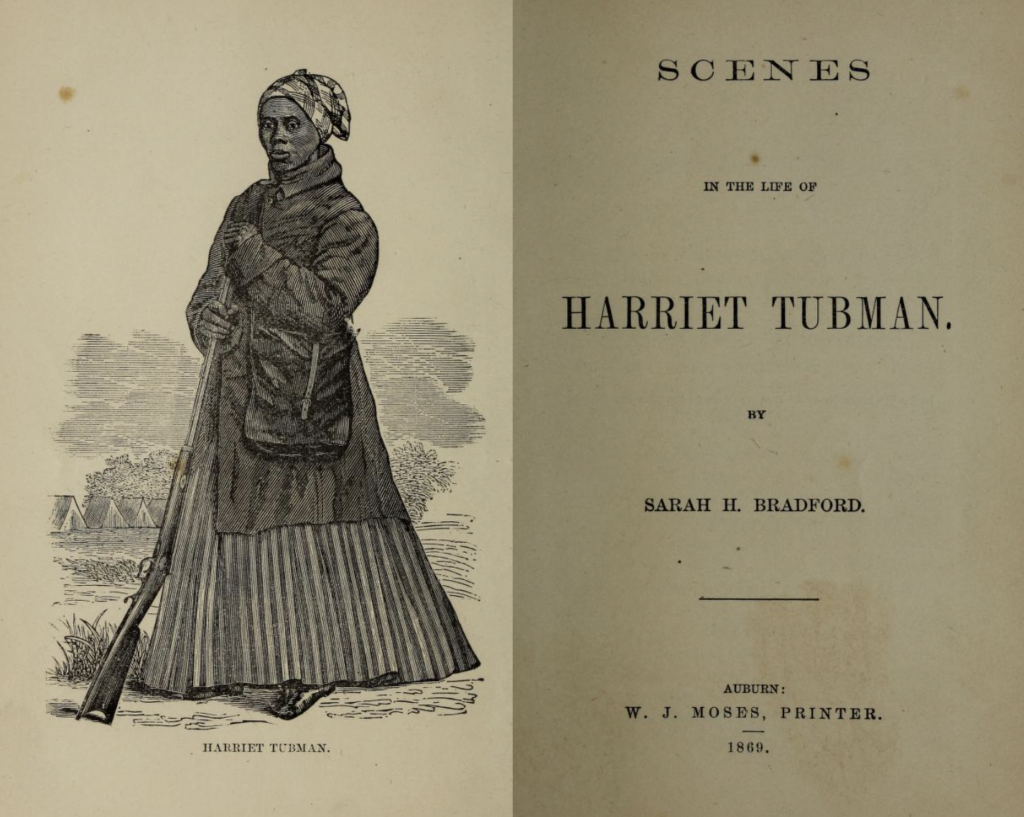
As Tubman biographer Jean Humez notes, Bradford was not “culturally competent” to faithfully record and accurately convey the then famous liberator’s story. Bradford relied partly on interviews she conducted with Tubman—how many, we do not know—but she only published stories she claimed she could verify. “Much has been left out which would have been highly interesting,”
Bradford wrote:
“Because of the impossibility of substantiating by the testimony of others the truth of Harriet’s statements. But whenever it has been possible to find those who were cognizant with the facts stated, they have been corroborated in every particular.”
After publication, friends complained that the book contained many errors, and they hoped the publisher would release a corrected edition. He did not. The imperfections irritated Ellen Wright Garrison, the daughter-in-law of abolitionist and close Tubman friend William Lloyd Garrison, who wrote in a letter to Martha Coffin Wright, dated December 26, 1868:
“I don’t think much of Mrs. Thingumbob’s [Bradford’s] effort … she is continually apologizing for haste, & going off to Europe. If she hadn’t time to do the subject justice, why undertake it? … Still it is an interesting account of marvelous things, & I only wish it could have been better worked up.”
Despite Bradford’s missteps, she did disclose important details of Tubman’s youth and young adulthood. The misinformation persisted, though, through three new editions published by Bradford under the title, Harriet, the Moses of Her People, the last in 1901. Discerning fact from fiction proved problematic until modern times, but many of Bradford’s misstatements and errors are still firmly accepted as fact. For instance, Bradford claimed that Harriet Tubman rescued 300 people in 19 trips to the Deep South (p. 53). In fact, according to Tubman’s own words and testimony from the people she rescued, she brought about 70 people—family and friends—to freedom during approximately 13 trips to Maryland. She gave instructions to about 70 more who liberated themselves independently.
According to Tubman’s own words and testimony from the people she rescued, she brought about 70 people to freedom during approximately 13 trips. She gave instructions to about 70 more, who liberated themselves independently.
Bradford was unclear about when and where Tubman was born. In 1943, journalist Earl Conrad published his biography, simply called Harriet Tubman, and he determined that she was born in 1820 in Bucktown, Dorchester County, Maryland on the farm of Edward Brodess. In fact, court records reveal she was born in late February or early March, 1822, on the 1,000-acre plantation of Brodess’s stepfather, Anthony Thompson, 10 miles from Bucktown in an area known as Peter’s Neck. According to expense accounts filed in a lawsuit between Brodess and his stepfather in 1824, Thompson recorded a $2.00 payment on March 15, 1822, to a midwife who tended to her mother Rit. Other court records reveal that Tubman was the only child born during that time.
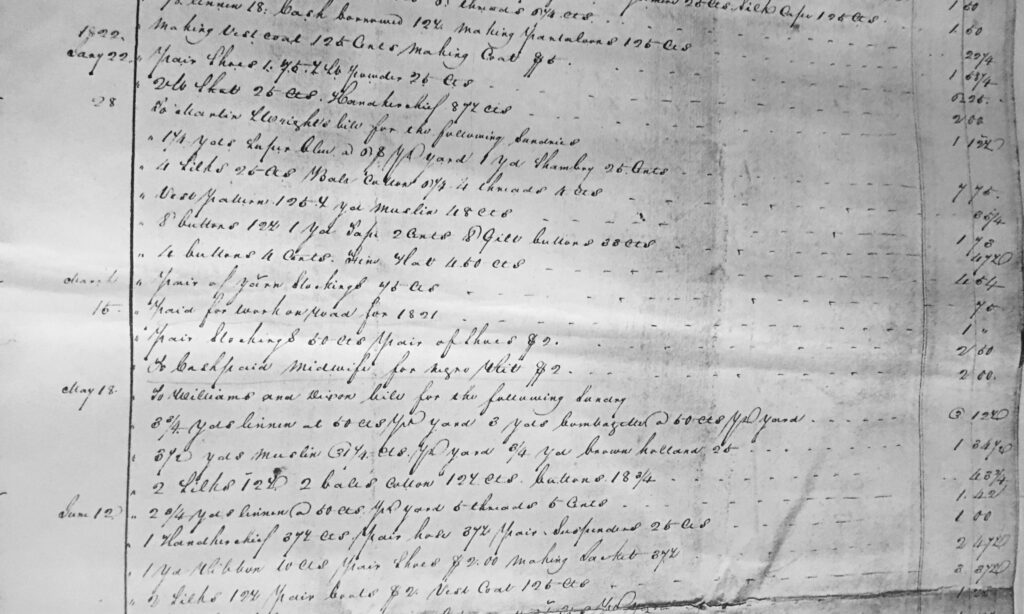
Another significant record documents Tubman’s first attempt at escape. The only financial reward for her arrest is from an October 3, 1849 advertisement in the Cambridge Democrat offering $300 for the return of “Minty” [Harriet Tubman] and her brothers, “Ben” and “Harry.” Sallie Holley, a former anti-slavery activist, made up the still popular $40,000 bounty figure in 1867 while trying to publicize Tubman’s petition for a military pension in the National Anti-Slavery Standard.
Thousands of dollars for Tubman’s capture sounds far more exciting than $100, but it is pure fiction. To put this in perspective, the U.S. government offered $50,000 for the capture of John Wilkes Booth, who murdered President Lincoln in 1865. The $40,000 figure is equivalent to several million U.S. dollars today, and for that amount every newspaper in the nation would have published the advertisement, and Tubman would have been captured.
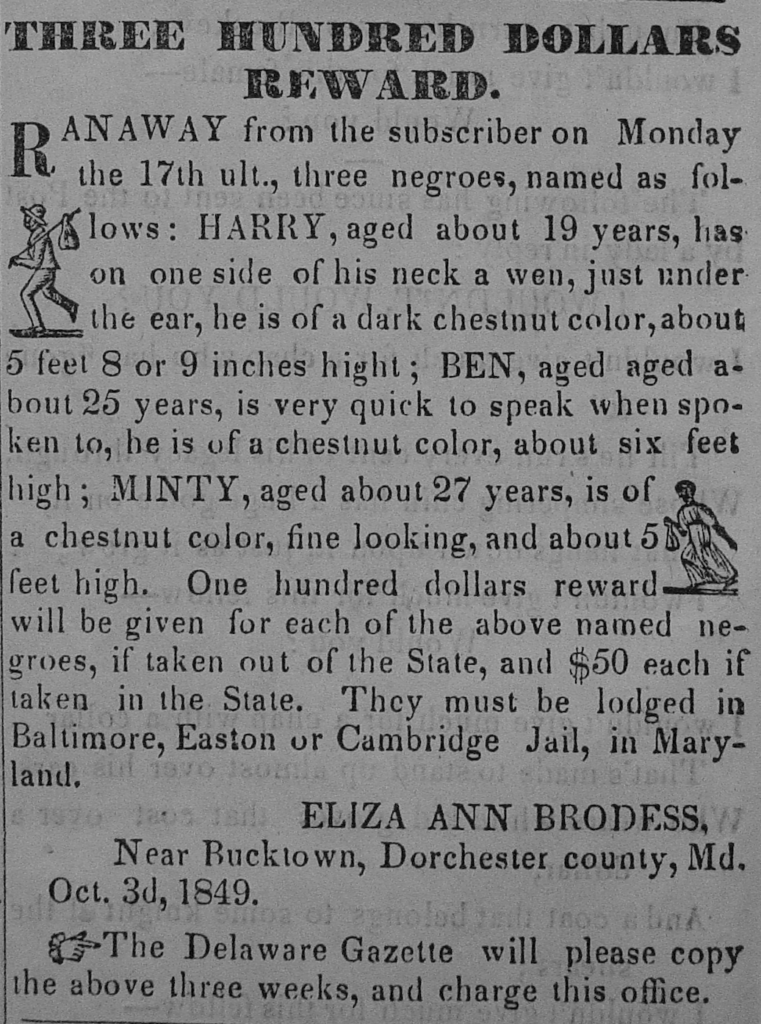
During the 1930s and ’40s, when popular fiction about the Underground Railroad thrived, several myths emerged. The folktales flourished because the participants in the networks to freedom had long been dead and, as historian Fergus Bordewich wrote in Bound for Canaan, “the living memory of the Underground Railroad passed into the realm of legend.” Underground tunnels, quilt codes, coded symbols, and more myths proliferated throughout the rest of the twentieth century. Bordewich argues that the myths suppress the truths about slavery in a “gilded haze of uplift,” erasing African American history instead of honoring it.
Anthony Cohen, an expert on the Underground Railroad who operates and interprets Button Farm Living History Center, an historic 19th-century property in Maryland, has spent years documenting and traveling multiple routes of the networks to freedom throughout the eastern United States, including the daring escape of his freedom-seeking ancestor, Patrick Sneed. During a recent discussion about a potential hiding site in an historic African American cemetery, Cohen cautioned us to refrain from jumping to conclusions about signs and symbols because “… most of the communication on [Underground Railroad] routes was verbal.” It was more likely that freedom seekers would have been told, he wrote, to “… ‘Go to the cemetery and wait in the vault overlooking the creek’…rather than ‘go to the cemetery and look for the squiggly symbols and then go hide in the vault.’”
Furthermore, Cohen finds myths about the Underground Railroad to be distracting and unproductive. The Quilt Code, late 20th-century folklore based on the testimony of one woman, a quilt purveyor in Charleston, South Carolina, is among the most recent and most pernicious myths. “Sadly,” Cohen communicated in an email, “the Quilt Code mythology has turned the [Underground Railroad] into a board game of sorts.” The signs and symbols of the Quilt Code and other coded signals have become substitutes for the real histories of slavery and the pursuit of freedom.
Tubman revealed in a few interviews that she navigated dangerous landscapes by relying on friends and relatives, principled people, both Black and white who hid her, told her which way to go and whom to trust. She used disguises, she walked, rode horses and wagons, sailed on boats and traveled on real trains. She mimicked the hoot of an owl to signal freedom seekers. She bribed people. She sent letters, written for her by someone else, to confidential friends like free Black veterinarian Jacob Jackson, and she used direct communication with people. She used and manipulated specific songs—Methodist spirituals “Bound for The Promised Land” and “Hail, Oh Hail Ye Happy Spirits”—by changing the tempo and some of the words to convey her information (pp. 26-27). She never sang “Follow the Drinking Gourd,” a song first documented in 1928 and popularized in 1951 when Lee Hayes rewrote and performed it with the Weavers, a white folk group.
Tubman followed rivers that snaked northward. She used the stars and other natural phenomenon to inform and guide her. She carried a pistol, not a rifle, more for protection than to threaten freedom seekers to continue on the journey. She trusted her literacies and felt fortified by her deep faith. She never said, “I freed a thousand slaves. I could have freed a thousand more if only they knew they were slaves.” She did say, “Slavery is the next thing to hell” (p. 20). She knew that not everyone could escape, and that African Americans employed multiple strategies to resist, survive and pursue freedom in small and large ways.
Tubman represents a beacon of light and hope. We suspend common sense, though, when we portray her carrying a lantern to guide her through the dark, as was once shown in a Google Doodle for Black History Month. Want bounty hunters to find you? Raise a lamp so they can see you!
She did say, “Slavery is the next thing to hell.” She knew that not everyone could escape, and that African Americans employed multiple strategies to resist, survive and pursue freedom in small and large ways.
We erase her own words, we disrespect her, when we substitute them with modern self-help phrases like, “Every great dream begins with a dreamer. Always remember, you have within you the strength, the patience, and the passion to reach for the stars to change the world,” which was first attributed to Tubman in 2007. Hillary Clinton summoned Tubman’s image as a strong, pioneering woman while on the campaign trail in 2008 and again in 2016 with a fake quote from the 1950s and popularized during the civil rights movement: “If you hear the dogs, keep going. If you see the torches in the woods, keep going. If they’re shouting after you, keep going. Don’t ever stop. Keep going. If you want a taste of freedom, keep going.” These and other tropes appear more popular today because of social media.
Internet platforms have fertilized misinformation, simultaneously exposing and accelerating our general historical illiteracy. From 19th-century photographs of Sarah Forbes Bonetta mislabeled “Young Harriet Tubman,” to a portrait of a late 19th-century Canadian couple promoted as Harriet with her first husband John Tubman, to extremist proclamations that she never existed at all.
These fabrications imperil historical truths and judgment and lay bare the dangers of not holding purveyors of myths accountable. If we do not challenge the myths, we lose opportunities to fully comprehend our nation’s past and the complicated histories that shape today’s cultural, racial and political discussions.
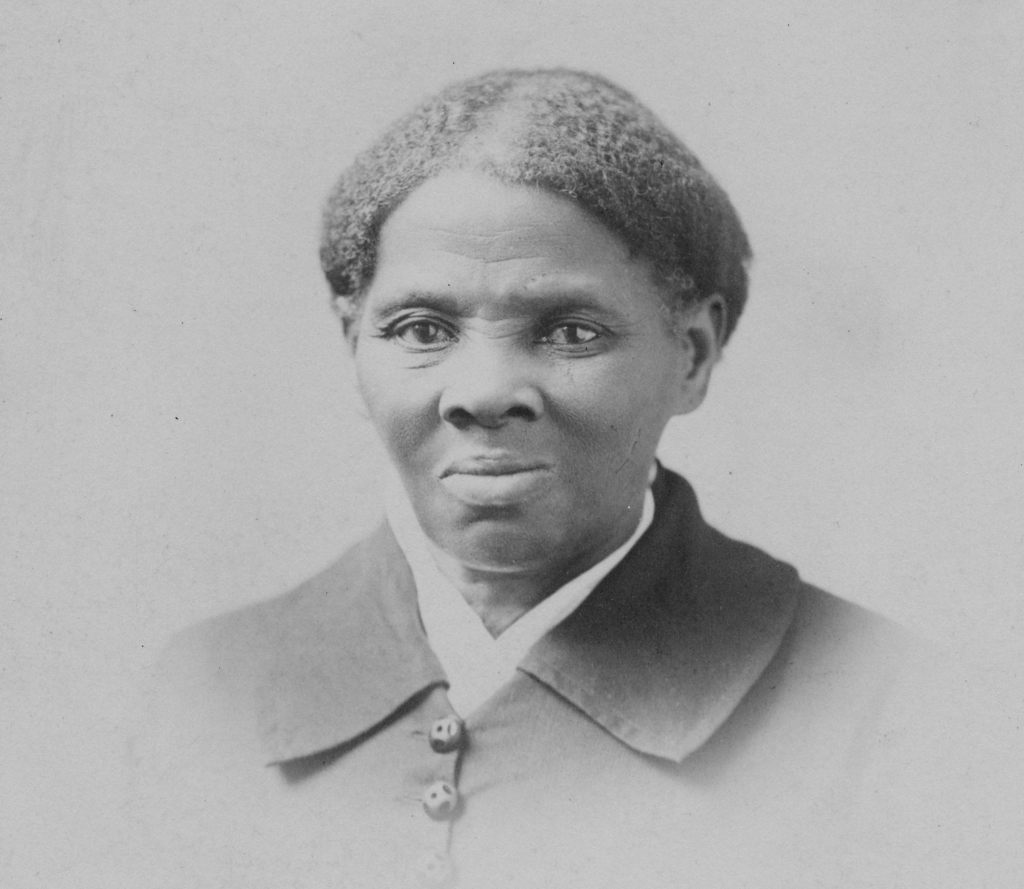
This year, in honor of the bicentennial of her birth, communities will be celebrating her life and legacy.
- Beginning in March of this year, the Harriet Tubman Byway and State and National Parks in Maryland will be hosting programming centered on Tubman’s experiences on the landscapes in the region of her birth, childhood and liberation.
- A second round of archaeological surveys in the spring on the former Anthony Thompson plantation promise new details about the daily life of Tubman’s parents and the community of enslaved and free people who helped raise her.
- A new documentary directed by Stanley Nelson, Harriet Tubman: Visions of Freedom, will air on PBS this fall.
- The Harriet Tubman Home and National Park in Auburn, New York, are offering programs and tours featuring Tubman’s fifty years living in freedom as a homeowner, entrepreneur, civil rights activist and advocate for housing and medical care for the poor, disabled, and aged.
- New statues honoring her legacy as a freedom fighter are scheduled for installation in Newark, N.J., and Cambridge, Md.
- Legislation in Congress proposes a gold commemorative three-coin set in Tubman’s honor from the U.S. Treasury; it has yet to pass either chamber. And advocates will continue their campaign for an accelerated release and printing of a new $20 bill featuring her likeness.
Instead of repeating inaccurate depictions of Tubman’s achievements, let’s reclaim her story, the one rooted in her own words and well documented deeds. Let’s demand deeply researched, purposeful and respectful interpretation, not “gilded haze,” to reveal the true story of this remarkable woman.
The essay series for the Harriet Tubman Bicentennial Project includes:
Michelle D. Commander, “Let Me Not Forget: Harriet Tubman’s Enduring Speculative Visions” | Feb. 2
Chanda Prescod-Weinstein, “Harriet Tubman, Astronomer Extraordinaire” | Feb. 3
The Life of Harriet Tubman
Kate Clifford Larson, “Harriet Tubman: A Life Beyond Myths” | Feb. 8
“Family Portraits of a Legend: Conversations with the Descendants of Harriet Tubman” | Feb. 9
Deirdre Cooper Owens, “Harriet Tubman’s Disability and Why It Matters” | Feb. 10
The Untold Stories and Songs of Harriet Tubman
Edda L. Fields-Black, “‘Harriet’ and the Combahee River Uprising” | Feb. 15
A Conversation with Music Composer Nkeiru Okoye | Feb. 16
Maya Cunningham, “The Sound World of Harriet Tubman” | Feb. 17
Imagining Harriet Tubman
Amy Corron and Rebecca Rouse, “Why Video Games Education Needs Harriet Tubman” | Feb. 22
A Conversation with Artist Nettrice Gaskins | Feb. 23
Michele Wallace, “Harriet Tubman in the Art of Faith Ringgold” | Feb. 24
Rediscovering Harriet Tubman
Jonathan Michael Square, “The Two Harriets” | March 1
A Conversation with Karen V. Hill, Director of the Harriet Tubman Home | March 2
Douglas V. Armstrong, “Using Archaeology to Rediscover Harriet Tubman’s Life in Freedom” | March 3
Celebrating a Legacy
Keisha N. Blain, “Justice and the Meaning of the Tubman $20” | March 8
A Conversation with Mary N. Elliott, Curator of American Slavery at the Smithsonian Museum | March 9
Harriet Tubman Syllabus | March 10
Questions or press queries about the series? Contact tubman200@msmagazine.com.



